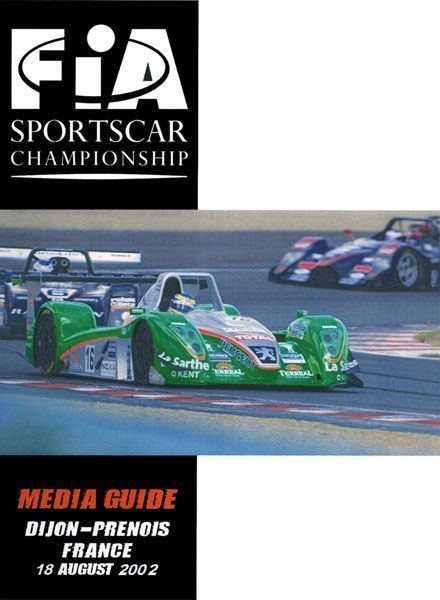 | ||
Fia sportscar championship magny cours 2001
The FIA Sportscar Championship was a sports car racing series created by John Mangoletsi and was eventually taken control of by the Fédération Internationale de l'Automobile (FIA). It was a series similar to the FIA GT Championship, concentrating on two classes of open-cockpit sports prototypes in endurance races mostly around Europe. The series was folded after the 2003 season.
Contents
Fia sportscar championship brno 2002
History
Following the demise of the World Sportscar Championship in 1992, Europe was left without a major sportscar series. In the United States however, attempts were underway to recreate the glory of the World Sportscar Championship with the IMSA GTP series returning to cheaper, open-cockpit sportscars to replace their highly technological and expensive closed-cockpit sportscars that were similar to those used in the World Sportscar Championship at its end. Following on this successful formula, in 1997 John Mangoletsi developed the International Sports Racing Series, a European-based series for open-cockpit sportscars. It would be supported by major teams like Rafanelli, Riley & Scott, Kremer Racing, Joest Racing and Konrad Motorsport and by manufacturers such as Ferrari, which was having success with its new 333 SP sports racer.
The International Sports Racing Series was open to Sportscars complying with either FIA SR1 or FIA SR2 regulations. The SR1 class was for cars with engines limited to a maximum capacity of 6000cc if naturally aspirated or 4000cc if supercharged. The SR2 class was for cars with production based engines limited to a maximum of six cylinders and a maximum capacity of 3000cc. The SR1 cars were similar to those contesting the LMP Class in the 24 Hours of Le Mans while the SR2 cars were similar to cars in the CN class as used in hillclimb events. In 1999, the series was officially recognized by the FIA and renamed the Sports Racing World Cup. Ferrari's success with the 333SP was proven with a large number of entrants making it the chassis of choice in SR1, while Riley & Scott, Lola, and other manufacturers attempted to overcome the dominant marque, Ferrari.
In 2001, the series was officially taken over by the FIA and renamed as the FIA Sportscar Championship and it continued to expand into new markets, including a partnership with Grand American in the United States. This partnership involved share races and, eventually, common regulations. With the creation of the American Le Mans Series in 1999 and the European Le Mans Series in 2001, the FIA Sportscar Championship found it increasingly difficult to attract top teams and manufacturers. Grand American changed to adapt to this shift in sportscar design with their dropping of the SRP1 class and the phasing out of the SRP2 class (eliminated in 2004) in 2003. By that time the FIA Sportscar Championship was suffered from a declining number of entries, leading to its demise at the end of the 2003 season. The FIA chose instead to back the new Le Mans Endurance Series that debuted in 2004, ensuring the continuation of Sportscar racing in Europe.
